Getting Around
- Home
- Getting Around
Istanbul has an extensive public transport network with its highway, rail and funicular systems and sea transport services.
Public Transportation

World’s Fastest-Growing Metro Line: Metro Istanbul
Metro Istanbul was established as an affiliate company by Istanbul Metropolitan Municipality in 1988 to operate railway system network in Istanbul. Metro Istanbul con- tinues to operate existing tram, metro, light rail, funicular and aerial cable car lines as an affiliate company of Istan- bul Metropolitan Municipality. Metro Istanbul has a vision of becoming an exemplary brand in the world. Winning UITP’s (International Association of Public Transport) best practice award in meeting high passenger demand with T1 Kabataş-Bağcılar Tram Line is a significant indicator of this vision. Length of urban rail system network in Istanbul is 233, 05 km and Metro Istanbul operates 154, 25 km of this network and Metro Istanbul renders ser- vices to 2 million people every day with its 12 urban rail system lines within this network. Metro Istanbul contin- ues to work for its aim of carrying Istanbul to the future by rendering fast and effective transportation services at world standards, constantly enhancing its transportation technologies, constantly investing in Research & Development and Human Resources.
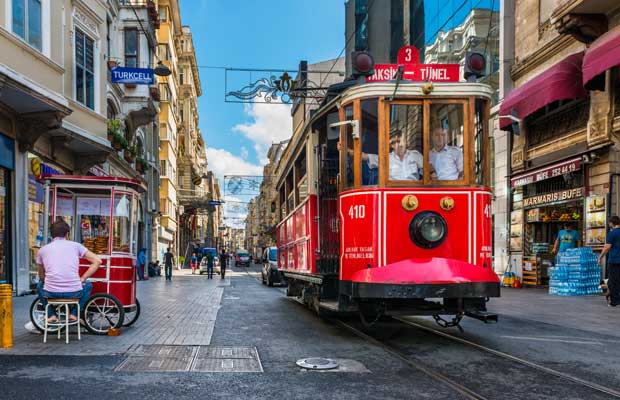
Symbol of Public Transportation: Tram
The 19th century’s popular transportation vehicle tram was first used in United States in 1852 and Paris in 1855. Is- tanbul met with this modern vehicle in 1871. Horse-drawn trams started working between Azapkapı and Beşiktaş. After the attention they received, the system spread rapidly to the whole city. At the end of the first year, the tram system carried four and a half million passengers in Istanbul with 430 horses. Trams were a very fashionable way of transportation in the Ottoman Empire. In 1914, trams came back to the lives of Istanbul residents as electric vehicles. In 1933, Türkiye’s founder Atatürk directly gave an order to have 320 more trams within the city. However, around 1960s trams weren’t able to keep up with the pace and size of the city and in 1966 trams of the city worked one last time and left their place to Trolleybuses. Though Istanbul residents never forgot trams… So much so that, the question of restoring old wagons at the museum and electric trams once again coming into service for nostalgia arose in 1989. The most suitable place for this project was Istiklal Street which was getting ready for pedestrianization. Thus today’s nostalgic tram line at Taksim started operating. The tram was embraced instantly with its red & white colors and original structure and became the symbol of Istiklal Street, Beyoglu, Istanbul and Türkiye.
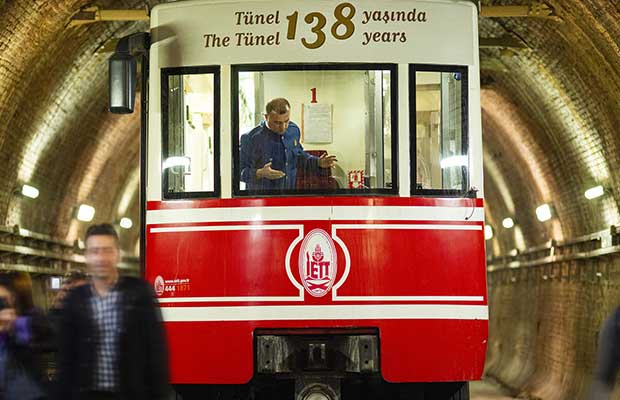
World’s Second Oldest Metro Line: The Tunnel
Istanbul’s very own Tunnel allows you to travel from Karaköy to Galata. It is known as the world’s second oldest metro line which has been serving the city for the last 146 years. A French architect Eugene-Henri Gavand, visited Istanbul in 1867 and observed that a large number of people walked the steep road between Galata and Karaköy every day. In 1871, he decided to design an underground railway in the form of a lift between these two locations so that the people and goods could be transported. After the approval of Sultan Abdulaziz, Gavand completed the Tunnel in just four years. The line was renewed in 1968 for electricity and has been providing non-stop service since 1971. The 573 meter long Tunnel has a single-wagon metro and travels the distance in 90 seconds. Since the alternative of the Tunnel is the 1000-step stairway, that 90 seconds means a lot to Istanbul residents. Today, the Tunnel is still used actively by Istanbul residents and offers a magical and nostalgic atmosphere to everyone for 90 seconds.
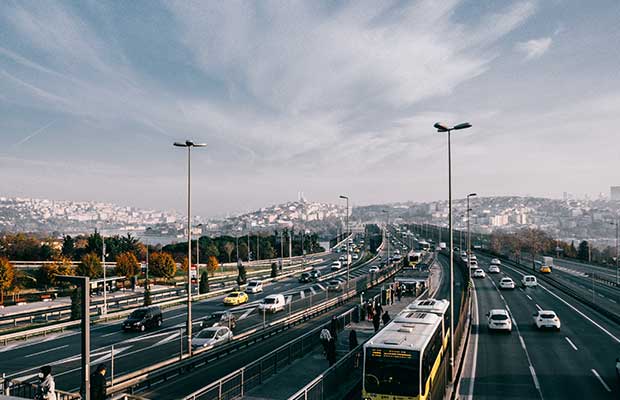
Istanbul’s Wheeled-Metro: Metrobus
The 19th century’s popular transportation vehicle tram was first used in United States in 1852 and Paris in 1855. Is- tanbul met with this modern vehicle in 1871. Horse-drawn trams started working between Azapkapı and Beşiktaş. After the attention they received, the system spread rapidly to the whole city. At the end of the first year, the tram system carried four and a half million passengers in Istanbul with 430 horses. Trams were a very fashionable way of transportation in the Ottoman Empire. In 1914, trams came back to the lives of Istanbul residents as electric vehicles. In 1933, Türkiye’s founder Atatürk directly gave an order to have 320 more trams within the city. However, around 1960s trams weren’t able to keep up with the pace and size of the city and in 1966 trams of the city worked one last time and left their place to Trolleybuses. Though Istanbul residents never forgot trams… So much so that, the question of restoring old wagons at the museum and electric trams once again coming into service for nostalgia arose in 1989. The most suitable place for this project was Istiklal Street which was getting ready for pedestrianization. Thus today’s nostalgic tram line at Taksim started operating. The tram was embraced instantly with its red & white colors and original structure and became the symbol of Istiklal Street, Beyoglu, Istanbul and Türkiye.
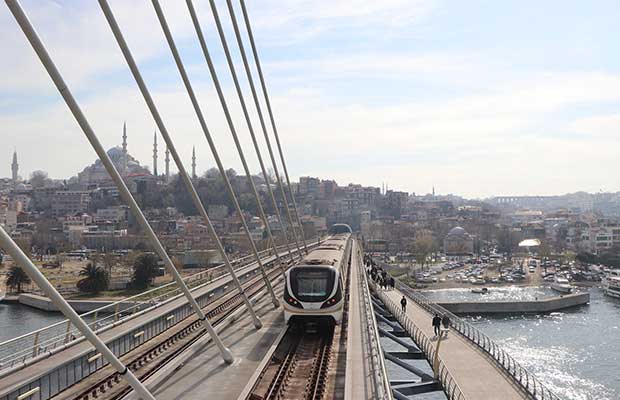
World’s New “Silk Road”: Marmaray
Istanbul’s very own Tunnel allows you to travel from Karaköy to Galata. It is known as the world’s second oldest metro line which has been serving the city for the last 146 years. A French architect Eugene-Henri Gavand, visited Istanbul in 1867 and observed that a large number of people walked the steep road between Galata and Karaköy every day. In 1871, he decided to design an underground railway in the form of a lift between these two locations so that the people and goods could be transported. After the approval of Sultan Abdulaziz, Gavand completed the Tunnel in just four years. The line was renewed in 1968 for electricity and has been providing non-stop service since 1971. The 573 meter long Tunnel has a single-wagon metro and travels the distance in 90 seconds. Since the alternative of the Tunnel is the 1000-step stairway, that 90 seconds means a lot to Istanbul residents. Today, the Tunnel is still used actively by Istanbul residents and offers a magical and nostalgic atmosphere to everyone for 90 seconds.
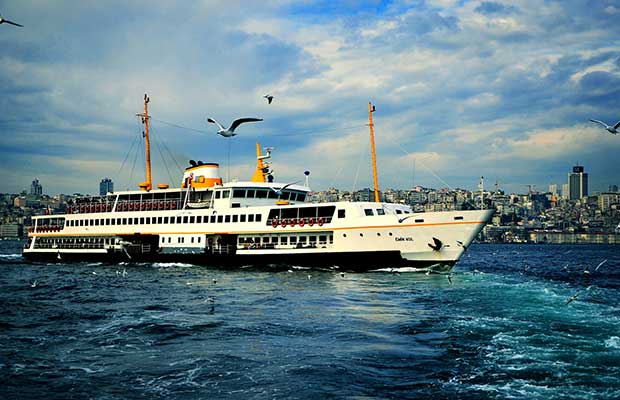
Ferry and Sea Bus
There are many ferry and sea-bus stations in Istanbul connecting the Bosphorus shores, Golden Horn, Prince’s Islands and other areas throughout the city. ‘Vapur’ (big ferries) are connecting the main areas with each ferry leaving in 30 min. or 45 min. periods from 07:00am in the morning untill 10:00pm in the evening. Where the small ferries of ‘Dentur Avrasya’ or ‘TURYOL’ are connecting the same areas with smaller boats departing in every 5- 15 min. periods. Thus the massive city traffic can easily be avoided with an incredible sightseeing opportunity. There are also sea-bus routes that enables public transportation from Istanbul to main areas within the city limits and/or the cities around the Marmara Sea.

Bus
Frequently used all around the city, buses are an economic means of transport. Carrying, the private laned express bus service metrobus carries 700 thousands of passengers daily without passing within a traffic mass; provides fast and comfortable transportation between Söğütlüçeşme on the Asian side and Beylikdüzü on the European side.
For more information : https://iett.istanbul/en

Dolmuş
Dolmuş is a kind of shared taxi with specific fixed and extensive route and a specific fee. There are many Dolmuş routes in the city. One of the commonly used line is the Taksim – Kadıköy line, which is one of the few routes crossing the Bosphorus from both sides and the line is crowded almost in every hour of the day as it is way cheaper then taking a cab.
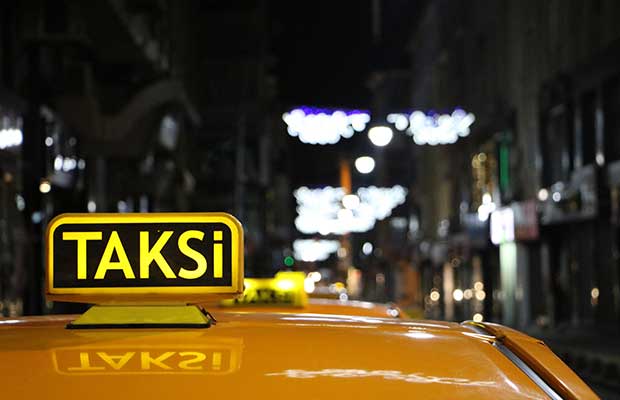
Cab / Taxi
Istanbul’s taxis are yellow lighted with TAKSI signs on top. Taxis can easily be found all around the city. In addition, there are many taxi stops around the city near most crowded places, hotels, restaurants and touristic spots where they can be acquired easily by phone. There is also a mobile application “taximetre” where you can easily call a cab and calculate the approximate fee for the trip.
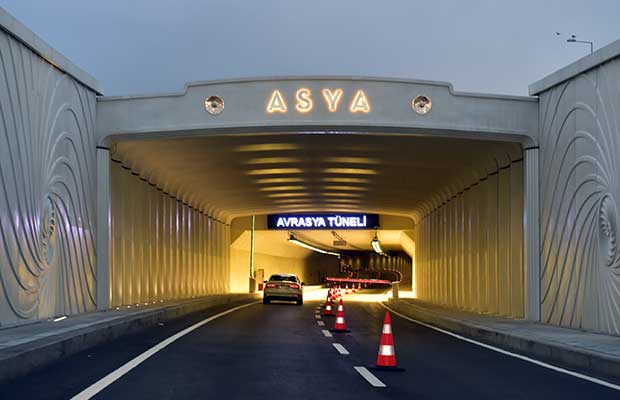
Shortest Road between Two Continents: Eurasia Tunnel
In Istanbul, there are many different ways to travel from one continent to the other. The brand new Eurasia Tunnel is the most special way to do it because it is world’s first and only highway tunnel which connects the Asian and Eu- ropean continents. Every single story of Istanbul has Asian and European bits in it and it is not possible to isolate Istanbul from the monu- mental stories of these two continents. For centuries, Istan- bul’s story has been about the power of uniting these two continents. That’s why, Eurasia Tunnel is one of a kind and its place in history very significant. Eurasia Tunnel is world’s first twin-deck highway tunnel crossing beneath the seafloor. The tunnel covers a route of 14.6 kilometers. While the 5.4-kilometer section of the project consists of a twin-deck tunnel under the seafloor built with special technology and connection tunnels, a to- tal of 9.2-kilometer routes on both the Asian and European sides includes road expansion and improvement works. It only takes 15 minutes to cross between continents. Eurasia Tunnel is an exemplary, world-class project with its sensi- tive approach to the environment, community and city. The air quality in the region is continuously monitored and it is being ensured that the emission values meet set standards.
Transportation cards
The city has an integrated electronic ticket system which uses smart RFID cards called IstanbulCard. It’s a contactless smart card used at public transport in the city and can be acquired at major transport interchanges.
The main benefit of IstanbulCard is to save time and money while travelling. The easy to use and easy to obtain reasonably priced IstanbulCard may be used in any public transportation throughout the city. Also, the card can be loaded at special machines or some kiosques which can be found almost in every main bus stations and ferry stations.
Maps
İstanbul Maps
Airport District
İstanbul Ticaret Odası Ek Hizmet Binası Hobyar Mah. Seyhulislam Hayri Efendi Cad. No:14 K:6 Fatih – 34112 İstanbul




